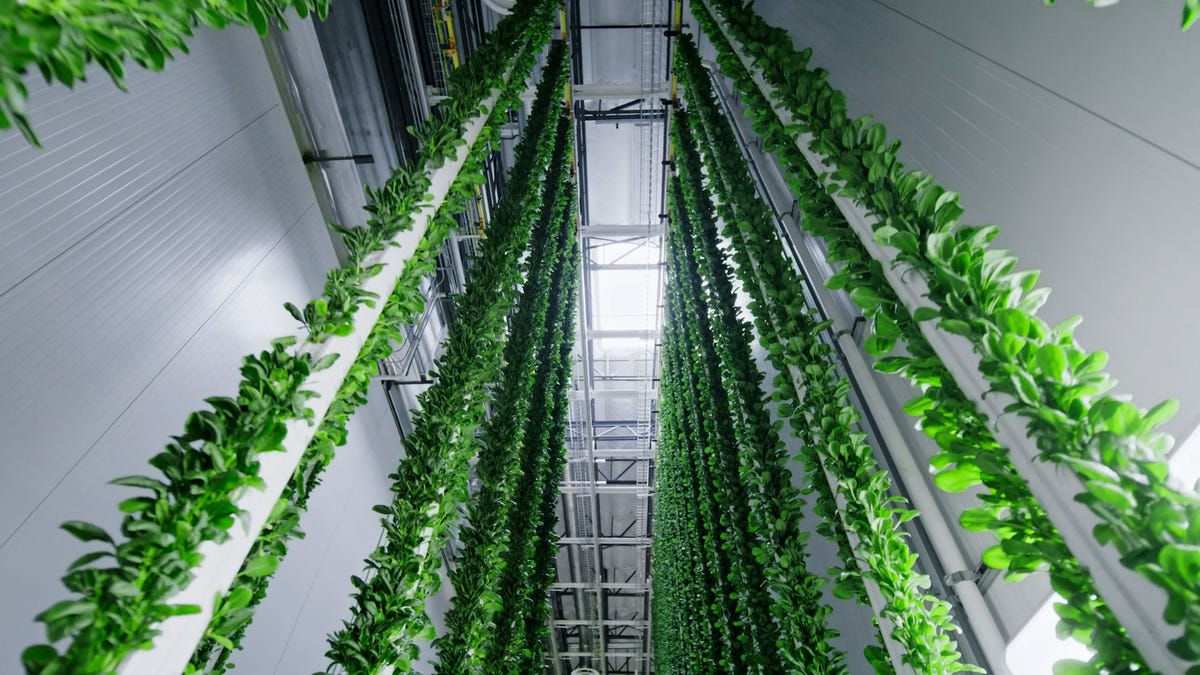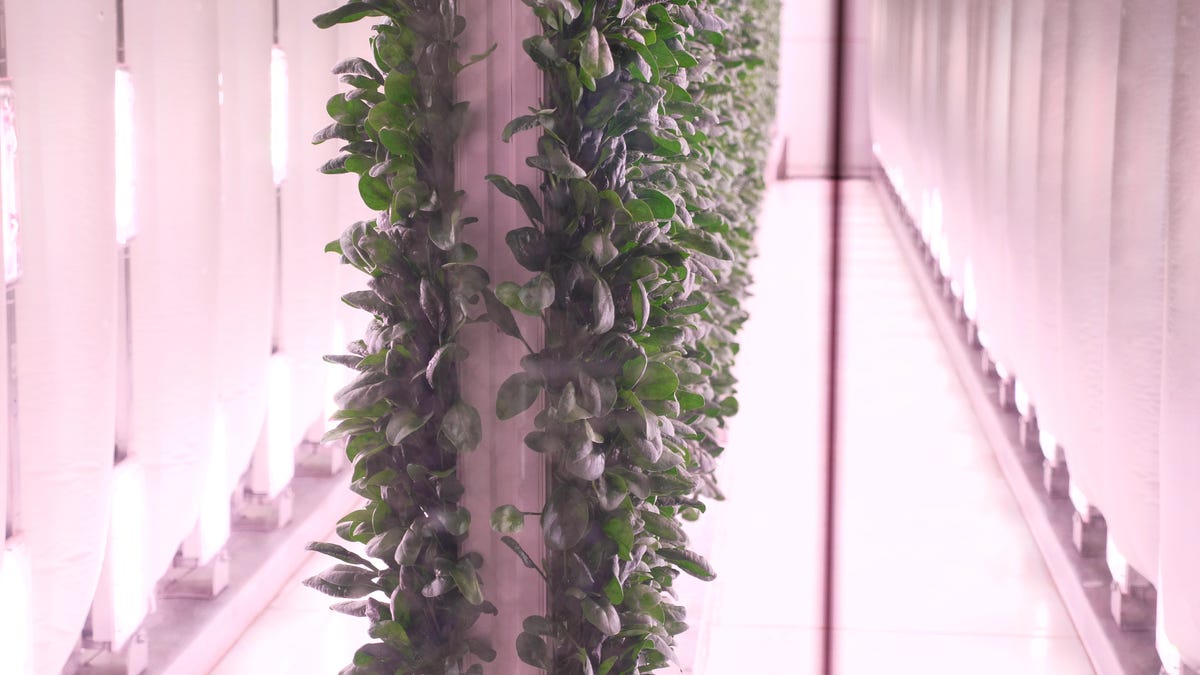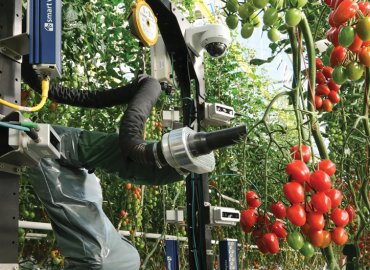Plenty Vertical Farms
Vertical Farming: How Technology Is Changing the Future of Agriculture
Plenty’s vertical farm uses a fraction of the land and water required by horizontal farming
Plenty Vertical Farms | Jesse Orrall |
We got a tour of a new vertical farming facility in Compton, California, to learn about the potential benefits of growing food in towers rather than fields, and the technological innovations required to make it happen.
The indoor facility is run by Plenty, a company that specializes in this style of farming. With food security under threat from climate change and extreme weather events, the folks at Plenty believe they’ve developed a compelling alternative that uses less land than traditional farming.

Since Plenty’s produce can be grown closer to where it’ll be consumed, the energy-cost of transportation goes down. The company’s vertical system also allows plants to be grown at times of the year when they might not otherwise be available. However, growing indoors also poses some unique challenges.
The sun shines for free, but re-creating a comparable nourishing light source indoors requires energy (not to mention all the power-hungry robots shuttling Plenty’s plant towers around). Plenty buys its power from the grid. Nate Storey, the company’s chief science officer and co-founder, tells me that Plenty specifically seeks out areas where renewable power such as wind and solar are either readily available or set to become a key source for the grid in the future. Storey says he sees Plenty as offering a new source of demand for the growing renewable energy sector’s supply and demand equation.
The Plenty process
The entire process of generating produce, from seeding to packaging, is handled by Plenty’s Compton farm. Robotic systems and conveyor belts shuttle the plants from one destination to another, monitored by a team of workers in personal protective gear to keep everything up to sanitary standards.
To re-create the sun’s nourishing light, Plenty has its very own proprietary lighting system. As a precaution, I wasn’t allowed to film its luminescent setup directly. I had to film through a filtered window that distorts the spectrum.

“All of those parts of the [light] spectrum do very specific things in the plant. They drive photosynthesis very efficiently. They also have programming effects on the plant. So we can tell the plant what to do with the spectrum to make sure it grows how we want it to grow,” Storey tells me.
The harvest involves a giant yellow robotic arm picking plant towers up and positioning them to slide through a set of blades that sever the fresh greens as the tower passes by.
Plenty’s goods can be bought at certain locations in partnering stores like Walmart, Bristol Farms and Whole Foods. Storey tells me they’re priced similarly to other organic fare. Plenty is labeled “pesticide free” rather than organic. The organic certification does allow for the use of some pesticides, so Plenty’s reps say their greens are “beyond organic” and don’t utilize GMOs, or genetically modified organisms.
Next on Plenty’s agenda is growing strawberries and tomatoes vertically, so keep your eyes out for that.
Original Article & Video: https://www.cnet.com/health/vertical-farming-how-technology-is-changing-the-future-of-agriculture/
The post Plenty Vertical Farms appeared first on GROZINE.



